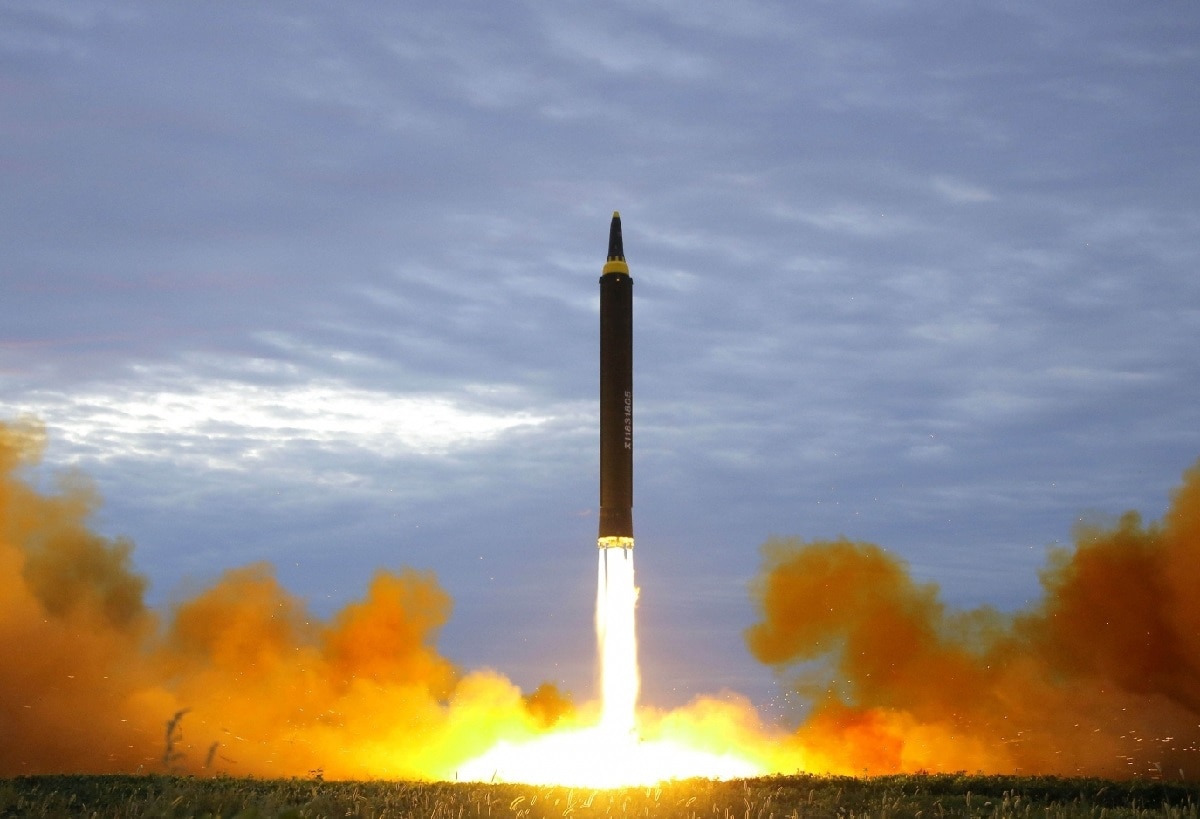What Would a South Korean Nuclear Weapons Program Look Like?: In the last year, a gathering debate has arisen in South Korea about whether it should build nuclear weapons to counter North Korea’s nuclear weapons. North Korea’s relentless missile testing program this year has pushed forward this debate. If the Pyongyang regime conducts another nuclear test – its seventh – that too will accelerate the Southern discussion.
North Korea’s Nuclearization is Pushing the Same in South Korea
The country’s conservative party has already argued that South Korea should withdraw from the Nonproliferation Treaty, which bans South Korean nuclear weaponization if North Korea goes ahead with its seventh nuclear test. The debate is now so serious that the US ambassador to South Korea felt compelled to weigh in. In the fourteen years, I have lived in South Korea and taught international security, I have never seen as much discussion of the nuclear option as in the last year.
North Korea’s relentless march toward better, faster, and more powerful nukes and missiles is pushing South Korea further and further into a corner. Hawkish options which were once deemed too radical or destabilizing – such as airstrikes on North Korean missile sites or South Korea’s own nuclearization – are under discussion now. If South Korea reaches for these more extreme options, North Korea has only itself to blame. Its exorable nuclearization and missilization are the cause; South Korea has been a model member of the NPT. It clearly does not want nuclear weapons. It has long encouraged a non-nuclear peninsula. The North Koreans have said the same while nonetheless nuking up relentlessly. The shape of the South Korean response is now coming into view.
Mutually Assured Destruction
The primary purpose of a nuclear arsenal is deterrence. Nukes best serve to prevent one’s opponents from considering a preemptive nuclear strike. Critically, strategic nuclear deterrence does not end conventional warfare. The US and USSR/Russia have fought numerous proxy conflicts in the nuclear age – Korea, Vietnam, Afghanistan, and Ukraine. But nuclear escalation is inhibited when parties can credibly threaten each other with assured destruction.
A primary justification for Southern nuclearization, then, is to check any North Korean notion that its nukes could be used coercively – as threats to compel compliance from South Korea. Russia has used its nuclear weapons in this way with reasonable success in the Ukraine War. Its oblique nuclear threats of escalation have inhibited an even more robust NATO intervention on Ukraine’s behalf. Were Russia solely a conventional power, NATO might have imposed a no-fly zone over Ukraine or sunk Russia’s Black Sea fleet.
To accomplish this basic deterrent task, South Korea would need a few dozen survivable warheads. ‘Survivable’ means that South Korea could absorb a nuclear first strike by North Korea and still retaliate with atomic arms. If both sides have such survivability, the incentives to strike first decline dramatically. The strategic situation becomes a stalemate of mutually assured destruction (MAD). The result is a cold peace. The ironic outcome of such powerful weapons is stability, as no player wants to take the huge risk of conflict.
Nuclear Weapons: What Does South Korea Need?
To achieve MAD, South Korea does not need a large arsenal. It does not tactical nuclear weapons for use on the battlefield, for example. Nor does it need the high-yield thermonuclear weapons the Americans and the Soviets developed through the Cold War. Nor does it need intercontinental ballistic missiles carrying multiple warheads. Indeed, it needs no more than fifty (probably even fewer) small warheads on platforms that could ride out a Northern first strike. A few submarines with nuclear missiles would be enough. South Korea does not need land-based missiles or bombers. Its arsenal is not intended to threaten China; it only needs to be extensive and diverse enough to deter the North.
This is a crucial point. Much of the resistance to Southern nuclearization stems from fears of a nuclear ‘cascade.’ North Korea’s spiraling, unchecked nuclear program might produce the same in South Korea and Japan. This action-reaction chain is possible, of course, but South Korea has strong incentives to be discipline, restrained, and transparent about its nuclearization.
Seoul does not need a large arsenal to deter North Korea. Its purpose is strictly defensive. It only needs a few dozen warheads on a few dozen missiles on a handful of submarines to achieve this. Its political purpose is to compensate for American alliance anxiety now that North Korea strike the US homeland. South Korean nukes serve to lessen allied tension, via ‘self-insurance,’ over the thorny question of US willingness to fight a nuclear war on Seoul’s behalf. They are, very obviously, not intended as offensive weapons nor as threats to China

Image of Hwasong-12 IRBM. Image Credit: KCNA.
.
This South Korean move would clearly be controversial. But it is important to note that this can be done in an open, public way, with clear explanations of Seoul’s (justifiable) reasons and with a minimal arsenal focused on one task. If North Korea and China do not like this outcome, let them finally negotiate peninsular arms control seriously after decades of gimmicks.
Expert Biography: Dr. Robert E. Kelly (@Robert_E_Kelly; RoberEdwinKelly.com) is a professor of international relations in the Department of Political Science at Pusan National University and 19FortyFive Contributing Editor.

